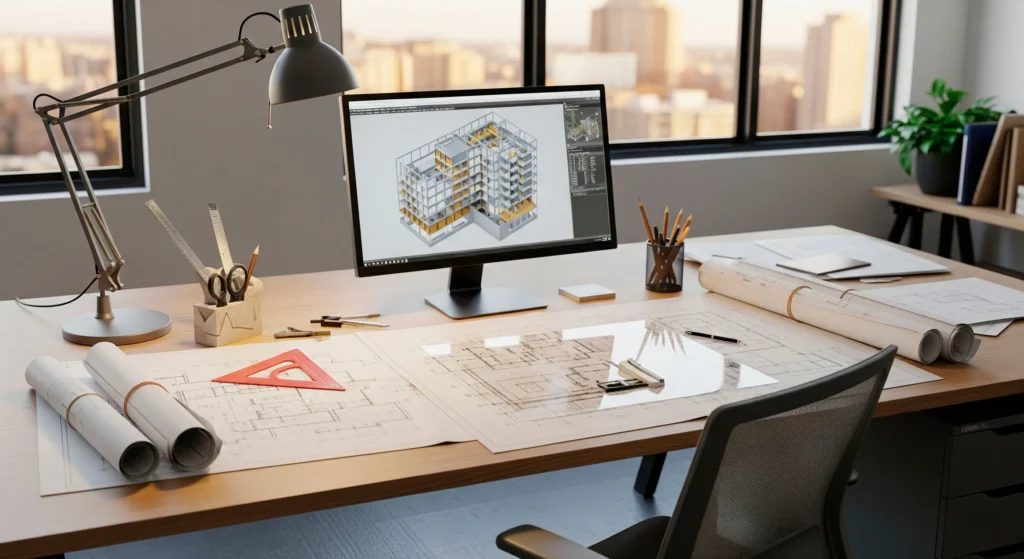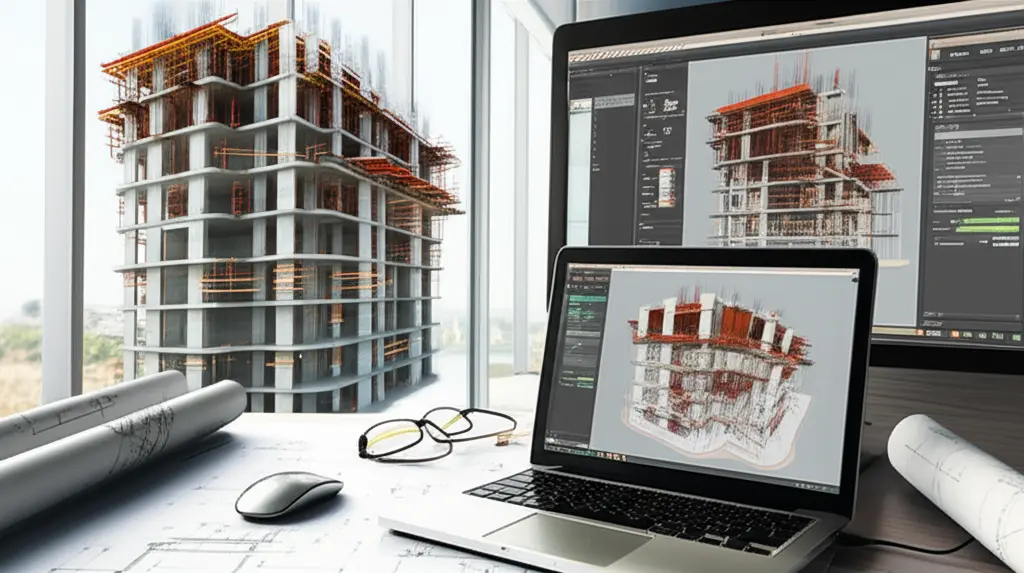Top Sustainable Construction Materials
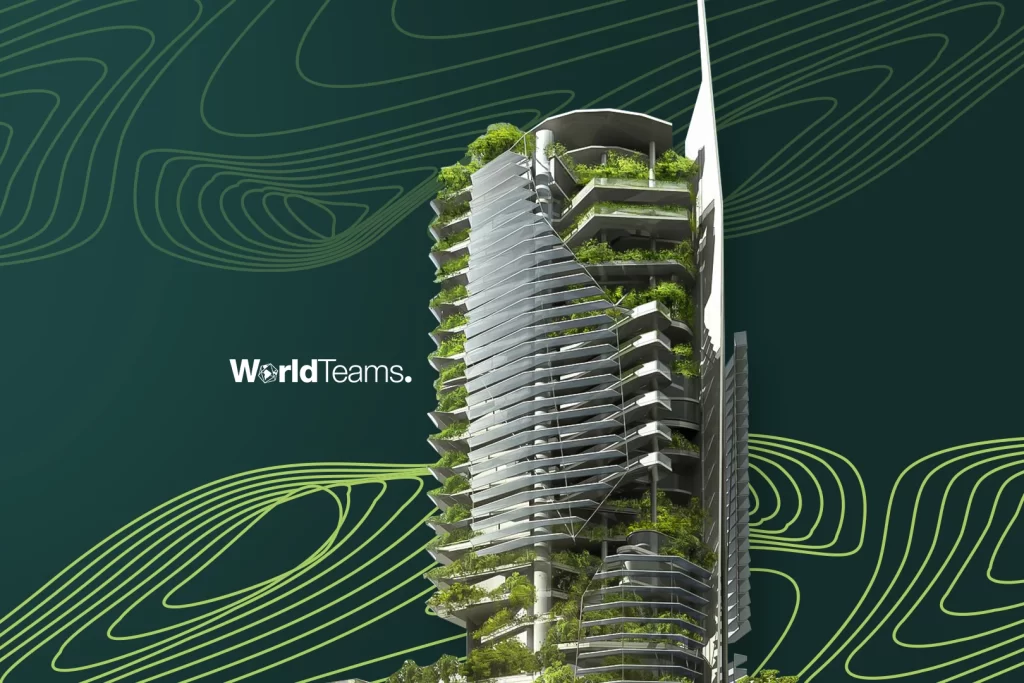
Sustainable architecture is not just a trend; it’s a commitment to creating a healthier, more environmentally conscious future.
As the world grapples with the consequences of climate change, the construction industry is increasingly turning to sustainable construction materials to build eco-friendly structures that stand the test of time.
In this article, we will explore the top sustainable construction materials shaping green buildings’ landscape, focusing on simple building materials that contribute to creating sustainable homes.
Here are 10 of the best sustainable construction materials:
Bamboo
Bamboo is a powerhouse among sustainable construction materials. Its rapid growth and renewability make it an ideal choice for builders looking to reduce their environmental footprint.
Bamboo can be used for various purposes in construction, from flooring and furniture to structural elements. Its tensile strength rivals that of steel, making it a reliable and eco-friendly alternative.
Recycled Steel
Traditional steel production is resource-intensive and environmentally harmful. However, recycled steel takes old steel and repurposes it for new construction projects.
This significantly reduces the carbon footprint associated with steel production. Recycled steel is robust, durable, and versatile, making it an excellent choice for framing and structural components in sustainable architecture.
Recycled Glass
Transforming waste into beauty, recycled glass is a sustainable material gaining popularity in the construction industry.
Architects can create aesthetically pleasing surfaces for countertops, tiles, and even decorative elements by repurposing discarded glass bottles and windows.
Utilizing recycled glass helps reduce the demand for new raw materials while adding a touch of elegance to eco-friendly buildings.
Reclaimed Wood
Wood is a traditional construction material, but its production often contributes to deforestation and habitat destruction.
Reclaimed wood salvages lumber from old buildings, giving it a second life in new construction projects. This conserves forests and adds character to structures with the unique patina and history that reclaimed wood brings.
Rammed Earth
Rammed earth construction involves compacting natural raw materials, such as clay, sand, and gravel, to create sturdy walls. This ancient building technique has found renewed relevance in sustainable architecture.
Rammed earth structures provide excellent insulation, reducing the need for additional heating or cooling. The materials are abundant and locally sourceable, minimizing transportation-related carbon emissions.
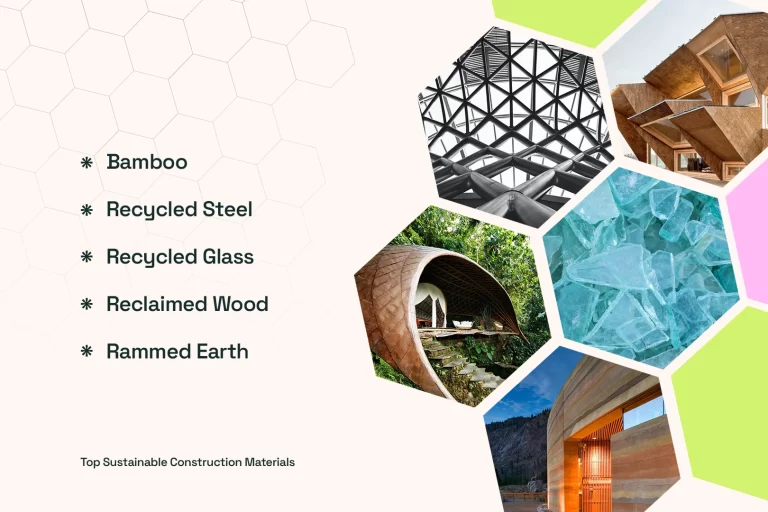
Hempcrete
Hempcrete is an innovative and eco-friendly alternative to traditional concrete. Composed of hemp fibers, lime, and water, this material offers excellent insulation properties and is carbon-negative during its growth cycle.
Hempcrete is lightweight, breathable, and mold-resistant, making it an attractive choice for environmentally-conscious builders looking to create sustainable homes.
Cork
Cork is harvested from the bark of cork oak trees without causing harm to the tree itself. Known for its excellent insulating properties, cork is commonly used as a flooring material and wall covering.
In addition to being a renewable resource, cork is lightweight, fire-resistant, and helps regulate indoor temperature, contributing to the energy efficiency of sustainable buildings.
Solar Tiles
Solar power is a cornerstone of sustainable architecture, and integrating solar panels into the building materials themselves is an ingenious way to harness the sun’s energy. Solar tiles blend seamlessly with traditional roofing materials and provide an aesthetically pleasing and energy-efficient solution.
These tiles convert sunlight into electricity, helping to power homes while reducing dependence on non-renewable energy sources.
Straw Bales
Straw bale construction involves using tightly compacted straw as a building material, creating well-insulated walls.
This simple and cost-effective method is gaining popularity in sustainable architecture for its excellent thermal performance and low environmental impact. Straw is a byproduct of grain production, making it readily available and a smart choice for creating energy-efficient homes.
Green Roofs
Straw bale construction involves using tightly compacted straw as a building material, creating well-insulated walls.
This simple and cost-effective method is gaining popularity in sustainable architecture for its excellent thermal performance and low environmental impact. Straw is a byproduct of grain production, making it readily available and a smart choice for creating energy-efficient homes.
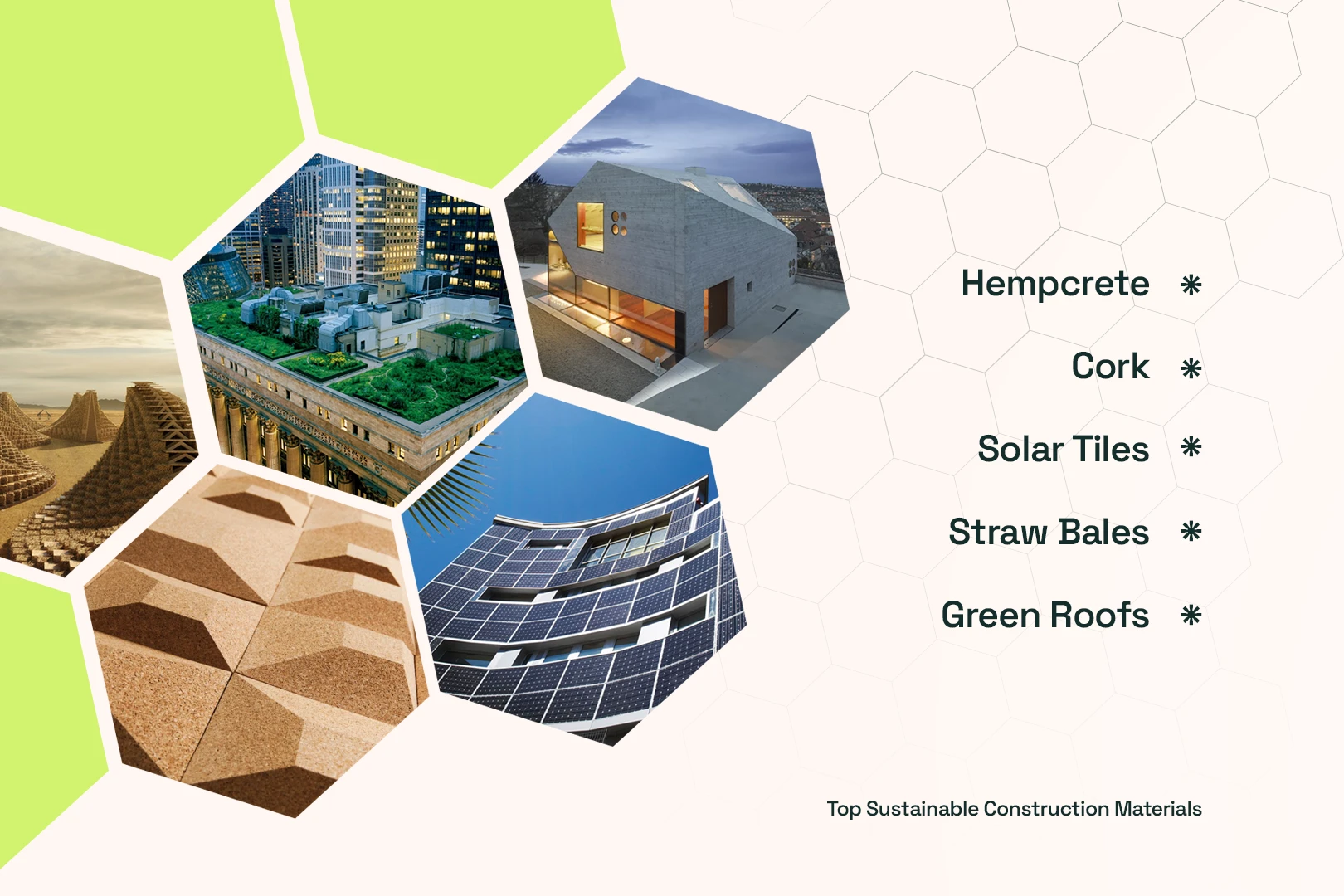
Collaboration and Innovation
Several startups, companies, and leaders worldwide are committed to building sustainable structures.
Graphyte
Graphyte, a startup with the support of Bill Gates, claims to have a “low-cost” formula for eliminating billions of tons of carbon dioxide over more than 1,000 years. The company’s innovative approach involves capturing carbon in bricks made from biomass, presenting an alternative solution to traditional methods.
Instead of using powerful fans to capture CO2 and inject it underground, Graphyte suggests confining CO2 in bricks, treating them specially, and burying them in landfills. The method, known as “Carbon Casting,” prevents CO2 from decomposing when using biomass waste, offering a cost-effective solution to store carbon for over a millennium.
Graphyte’s key element is biomass bricks, created by collecting natural biomass like wood remnants or agricultural waste, subjecting them to a unique process involving drying, removing microbes and water, and compacting them into blocks. These blocks are then wrapped in an impermeable barrier to prevent decomposition over time.
The final step involves storing these blocks underground with special sensors for permanent monitoring. The company aims to prevent CO2 from biomass waste from being released into the atmosphere during decomposition, confining it in “dense carbon blocks” with a special treatment and monitoring system to ensure long-term stability.
Graphyte aims to leverage low-value biomass, turning forest and agricultural waste into a part of the climate solution, reducing costs and environmental impact.
Graphyte boasts that its Carbon Casting method can eliminate “billions of tons” of carbon at a low cost for over 1,000 years. The startup emphasizes its ability to scale quickly, basing its solution on established technology that can be implemented globally.
The cost of storing CO2 with Graphyte’s method is claimed to be substantially lower, requiring only 10% of the energy compared to other systems. With Breakthrough Energy Ventures’ support, founded by Bill Gates, and a collaboration with American Airlines to remove 10,000 tons of CO2, Graphyte has attracted investor interest.
The company plans to complete its first pilot plant in Pine Bluff, Arkansas, in the coming year.
Grow your team and reduce costs with WorldTeams.

C-Crete
C-Crete, founded by Rouzbeh Savary PhD ’11, is revolutionizing the construction industry with its sustainable cement alternative, aiming to significantly reduce carbon dioxide emissions.
In a recent milestone, the startup poured around 60 tons of concrete while renovating a historic building in Seattle, Washington, marking the first use of C-Crete’s innovative binding material in the United States. The company’s patent-pending materials utilize locally available mineral feedstocks and industrial byproducts to create cement-free concrete.
Notably, C-Crete’s production process eliminates the need for the high temperatures associated with traditional portland cement production, resulting in reduced energy requirements.
The cement industry is a major contributor to global CO2 emissions, responsible for approximately 7% of human-caused emissions worldwide. Concrete, the second most-used substance globally, is integral to construction activities.
C-Crete’s vision is to reinvent century-old portland cement by leveraging local materials and eliminating the need for global transportation, making its approach more environmentally sustainable.
The company’s binder not only meets the performance requirements of traditional portland cement, such as strength and flowability, but it also absorbs CO2 over time, contributing to a greener lifecycle for the material.
Rouzbeh Savary, the founder and president of C-Crete, has deep roots at MIT, where he pursued a multidisciplinary education combining civil and environmental engineering with materials science, business, and physics.
The company’s molecular combination remains undisclosed pending patents and has undergone rigorous third-party testing, demonstrating performance metrics comparable to portland cement. With support from the U.S. Department of Energy, C-Crete is further innovating its materials to potentially make its concrete carbon-negative, reflecting the growing urgency within the industry to address carbon emissions.
The startup is now focused on scaling up production through partnerships, with inquiries pouring in from architects, engineers, construction companies, and building owners globally.
Gensler
Gensler is an architecture and design firm with a focus on sustainability. They aim to create environmentally responsible and energy-efficient buildings while promoting sustainable practices in their design approach.
Gensler’s sustainability approach revolves around creating buildings that not only meet the needs of today but also contribute positively to the environment and communities for the long term.
The firm focuses on designing resilient and energy-efficient structures that reduce their environmental impact. Gensler’s sustainability initiatives are guided by a set of key principles. They prioritize creating spaces that enhance human health and well-being, emphasizing the importance of a holistic approach to design.
The firm also strongly emphasizes environmental responsibility, striving to minimize the carbon footprint of its projects and promote resource efficiency. Gensler actively engages with clients and partners to collaboratively pursue sustainable solutions that align with each project’s unique needs and goals.
The firm provides insights into its sustainable projects, showcasing innovative designs and technologies contributing to a more sustainable built environment. Gensler’s commitment to sustainability is evident in its projects and internal practices, as the firm actively seeks to reduce its own environmental impact.
Overall, Gensler’s sustainability webpage is comprehensive, outlining the firm’s philosophy, principles, and practical applications in creating a more sustainable and resilient future through architecture and design.
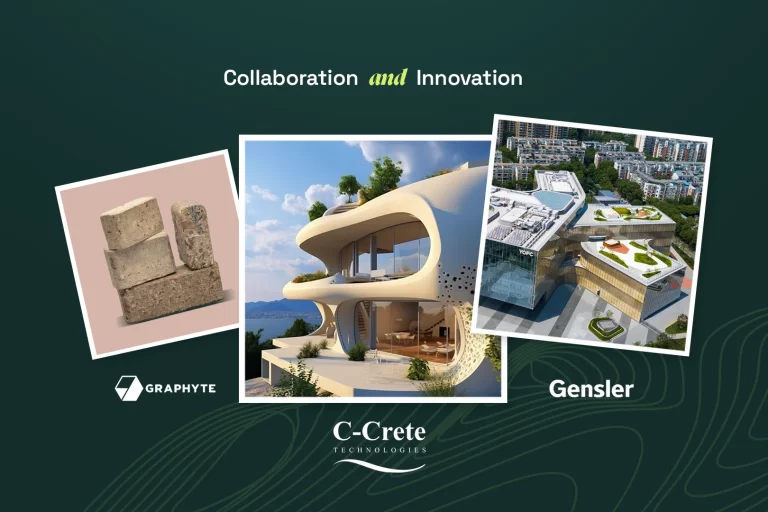
Conclusion
As the world becomes increasingly aware of the environmental impact of construction, the demand for sustainable architecture continues to rise. The use of top sustainable construction materials not only reduces the carbon footprint of buildings but also sets the stage for a more eco-friendly and resilient future.
From bamboo’s versatility to recycled steel’s strength and the aesthetic appeal of recycled glass, each material plays a crucial role in creating green buildings that stand as testaments to innovation and environmental responsibility.
By embracing these sustainable materials, architects and builders can contribute to creating homes that are structurally sound and harmonious with the planet we call home.
At WorldTeams, we are at the forefront of this transformative trend. As a leading architectural outsourcing firm, we understand the power and possibilities that materials bring to the construction industry. Our talent pool of experienced architects and designers is well-versed in sustainable materials’ latest advancements and applications. We are committed to harnessing the full potential of these materials to create exceptional spaces that exceed our client’s expectations.
By collaborating with WorldTeams, you access our unparalleled expertise and knowledge in integrating sustainable materials into your projects. We recognize that every project is unique, and our pool of architects can help design customized solutions that align with your specific requirements and goals. Whether incorporating smart glass for energy-efficient facades or utilizing green roofs for natural insolation, we can guide you through the process and help you leverage the benefits of sustainable architecture.
Reach out for your free consultation and discover how WorldTeams can elevate your projects using sustainable materials!
Remember, the future of construction is sustainable, and WorldTeams is here to lead the way.







